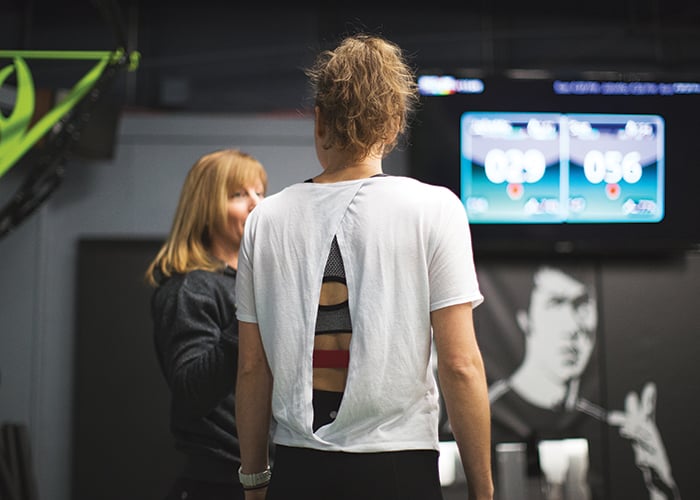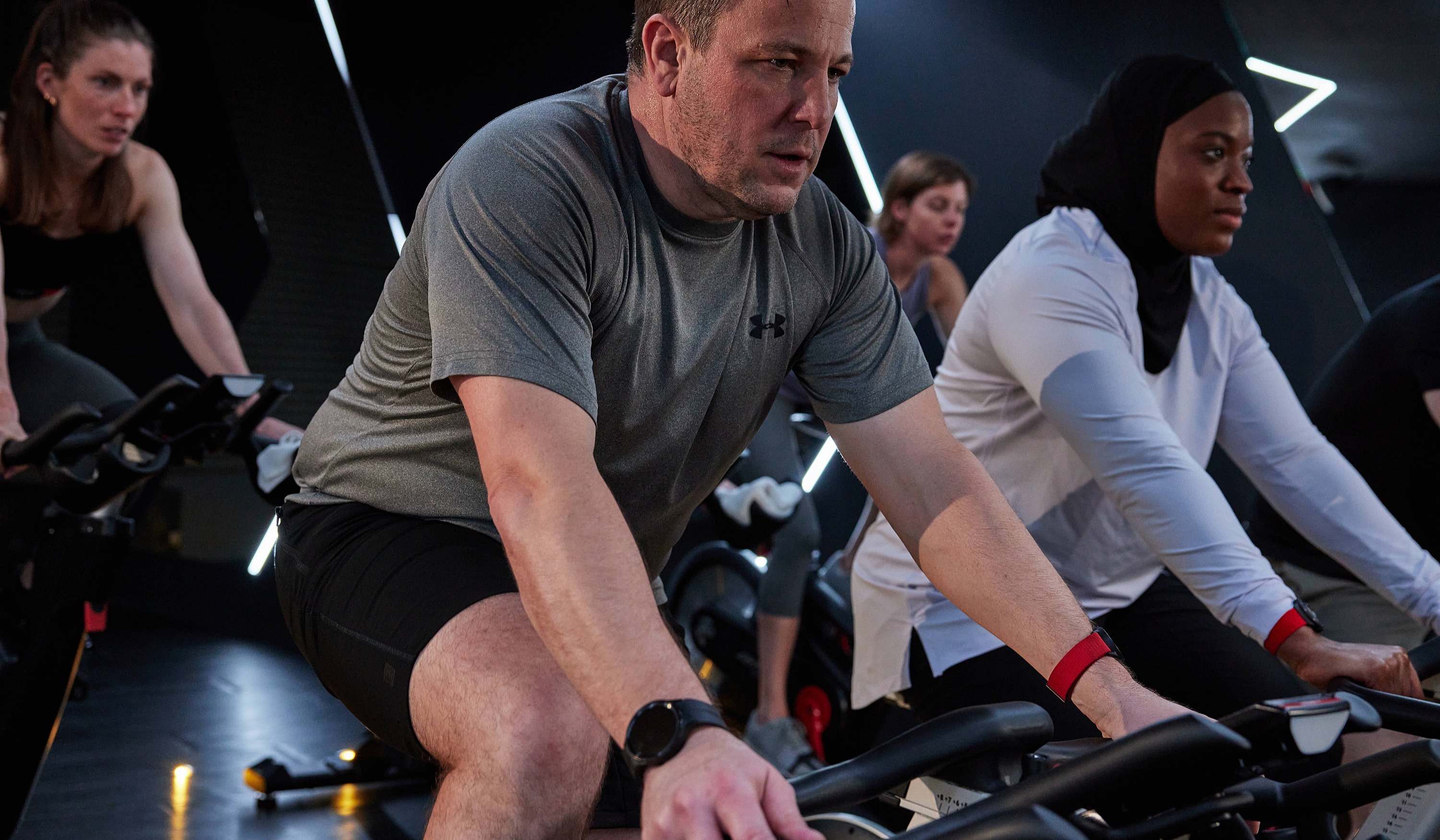What are Myzone Effort Points (MEPs)? Everything you need to know
If you’ve just strapped on your Myzone belt or you’re seeing “MEPs” for the first time in your app, you might be wondering: what are Myzone Effort Points, how do I earn them, and why do they matter?
MEPs are your key to motivation, movement, and measurable progress. MEPs are at the heart of our motivation technology, designed to reward effort over ability, so everyone has a chance to feel successful, no matter where they’re starting from. Let's break it down.
What are Myzone Effort Points (MEPs)?
MEPs stand for Myzone Effort Points. They measure how hard your heart is working during physical activity, and turn that into a simple, trackable score.
Instead of just focusing on calories burned, counting steps, or just measuring time spent working out, MEPs shift the focus to how much effort you’re putting in, and that’s what drives change.Whether you’re walking, lifting, cycling, or dancing around your living room, if your heart’s in it, you’re earning MEPs.
MEPs level the playing field. They mean that it doesn’t matter if you’re smashing your first session or chasing a new PB after years of experience, the points reward your personal effort.
How are MEPs calculated?
It’s all based on your heart rate zones. For every minute you spend moving, you’ll earn MEPs based on the heart rate zone that you’re working out in. The higher your intensity, the more points you earn per minute.
| Heart rate zone | Max heart rate % | MEPs per min |
| Grey zone | 50–59% | 1 |
| Blue zone | 60–69% | 2 |
| Green zone | 70–79% | 3 |
| Yellow zone | 80–89% | 4 |
| Red zone | 90–100% | 4 |
💡 Pro tip: Mix zones for a well-rounded workout. Don't just aim for the red zone. Fitness is much more about the ability to recover than it is to constantly go all-out. Your body gets better at recovering the more you transition back and forth between zones.
Why do MEPs matter?
MEPs are the foundation of Myzone and motivation technology. They’re what keep you coming back for more at times when it gets tough to stick to regular exercise. Here’s why they count:
- They help you stay consistent. 1300 MEPs a month is your golden target. Hit that and you’re building a habit that sticks.
- They level the field. You don’t need to be the fittest in the room, just make sure you're putting in effort.
- They bring the fun. MEPs unlock badges, status levels, and challenges. Think of it as gamified fitness.
- They build community. Compete with friends or teammates in MEP battles. Celebrate every step forward.
MEPs make movement mean something. They turn the “why bother” into a “can’t wait.”
How to earn more MEPs without overtraining
You don’t need to crush yourself every session. Instead, mix up your gym sessions and listen to your body:
- 💚 Use interval training: alternate between green and yellow zones
- 💙 Stack your week: spread out workouts to stay consistent
- 💛 Keep recovery active: low heart rate movement still earns MEPs
- ❤️ Don’t chase red every time: more isn’t always better
Remember that the goal isn’t perfection. It’s progress.
Where to see your heart rate and MEPs
Once your session’s done, your MEPs will automatically upload in your Myzone app. You’ll see them:
- In your Home feed
- On your Workout Summary screen
- In your Monthly Reports
- On your Live Tile during a workout
- As part of your Myzone Status level (more on that below)
MEPs and your Myzone status
MEPs are also how you level up your Myzone Status, from Myzoner when you join, Copper after your first move, all the way to Hall of Fame and beyond.
Stay consistent, hit 1300 MEPs each month, and you’ll climb the ladder:
The starting line comes simply from registering in the Myzone app. You'll earn Myzoner status. Then the real status game begins...
- Copper: Earn your first MEP. That’s it. Your journey has begun.
- Iron: Hit 1300 MEPs in a single month. You’ve met the standard of effort, every month.
- Bronze: Keep up 1300 MEPs for 3 consecutive months.
- Silver: Stay consistent for 6 consecutive months.
- Gold: A full year of effort – 1300 MEPs every month for 12 months.
- Hall of Fame: 48 months (4 years) of consistent effort. This status can’t be lost.
The journey doesn’t stop at four years, though. For those who keep showing up, even when the novelty wears off, Myzone rewards your legacy with more tributes to your long-term dedication.
Find out more about Myzone status levels.
Final word on MEPs: Your effort counts
MEPs are more than a number. They’re your proof of progress. They’re the spark that turns everyday movement into something meaningful, with the motivation to keep moving.
Lastly, they put a timestamp on every achievement for you to share with friends and look back on in the future.MEPs aren't about being the best, but about being your best. That's what motivation technology measures.
So whether you’re walking the dog, smashing out a circuit, or jumping into a Myzone challenge, remember that every effort counts.
New to Myzone? Download the Myzone app and start tracking your MEPs today.
🧠 Myzone Effort Points FAQs
What does MEP stand for in Myzone?
MEP stands for Myzone Effort Point, which rewards how hard you’re working based on your heart rate zone.
How many MEPs should I earn per month?
1300 MEPs is the recommended monthly goal to maintain or improve your Myzone Status. It aligns to the World Health Organization's guidelines for physical activity.
Can I earn MEPs from walking or light activity?
Yes! As long as your heart rate reaches at least 50% of your max, you’ll earn MEPs, even during lighter exercise.
What heart rate zone gives you the most MEPs?
The yellow and red zones (80–100% of your max heart rate) give you the highest reward, which is four MEPs per minute.
Why do the red and yellow heart rate zones give you the same MEPs?
The yellow and red zones reward you with the same amount of MEPs because it's not always important to be pushing to your max. If you don't look after your body and move between the heart rate zones through varied workouts, you could injure yourself or overtrain. Recovery is equally important as intensity.
Share this
You May Also Like
These Related Stories

How to Sustain Motivation Through 2017

Heart rate zones explained: What they are and how to use them


